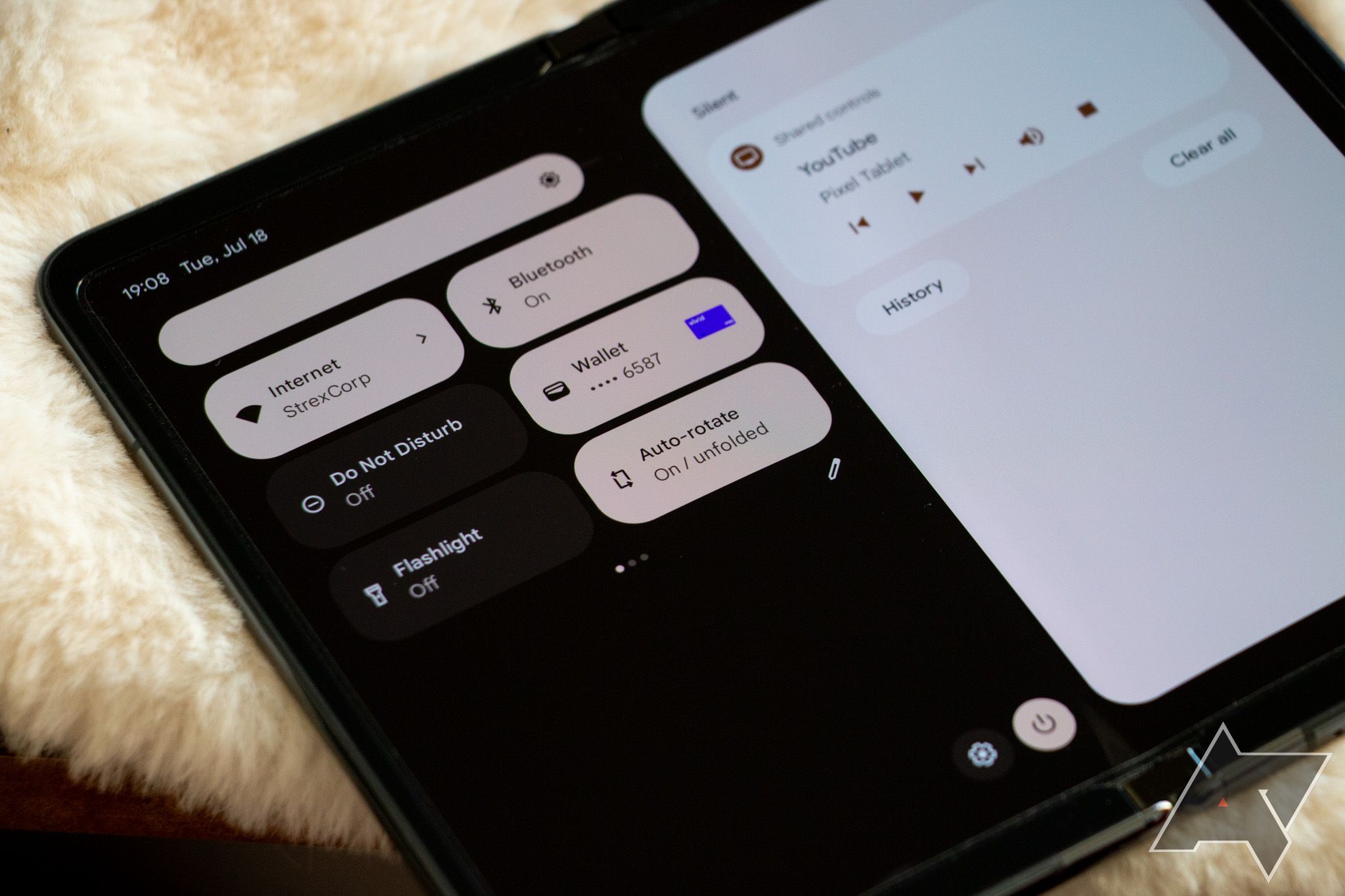The Google Pixel Fold has the smartest way to handle auto-rotate yet
The Google Pixel Fold may not quite measure up to Samsung's fourth-generation foldable when it comes to hardware durability and build quality, but to be fair, that sort of thing has never been Google's strongest suit. Instead, the Pixel Fold's appeal lies in its approach to software, include an assortment of smart features that mostly stay out of the way, but that can make a real difference when using the handset. One highlight is the way Google implements auto-rotation across the Pixel Fold's internal and external screen, which I would like to highlight today.
The Google Pixel Fold handles auto-rotate better than any other foldable
Out of the box, the Pixel Fold offers what has to be the most thought-out approach to auto-rotate yet. By default, the outer screen is locked to stay vertical, with the familiar override button showing up in a corner when you rotate the phone sideways.
However, the inner screen doesn't mirror this behavior by default. Instead, it's set to always auto-rotate, which makes a lot of sense given that it offers perfectly usable interfaces in both landscape and horizontal mode. This has me finding myself happily switching between landscape and horizontal mode on the unfolded screen all the time — much more than on other foldables, since it's so simple to keep my preferences separate. Frankly, I don't like auto-rotate on phone-sized screens, since it can easily trigger by accident when I just pull my phone out from my pocket. This is rarely an issue with the unfolded screen, though, since unfolding and holding it the right way is a much more deliberate action.
If you're not happy with this arrangement, you can tweak this behavior to your liking by long-pressing the auto-rotate tile in quick settings or searching for the option in system settings. Here, you get two independent toggles that let you select your preferred rotation behavior on the inner and outer screen — a great way to customize your experience, no matter how you use (and hold) your foldable.
This is far from the only thing I think Google's foldable does right software-wise. As quirky as some apps look when you use the unfolded phone in landscape mode with their letterboxing effect, it's still better than forcing you to rotate the screen or comically blowing up the interface to make it fill the full screen, which is what other manufacturers do. I even like Google's minimalist approach to multitasking, which is more intuitive to grasp for most people — no complicated floating windows or triple-app layouts to worry about.
The competition lacks some of these intricate software tricks
In contrast to Google's auto-rotate option, Samsung Galaxy Z Fold 4 owners have to jump through significantly more hoops to get this behavior. According to one Redditor who's pulled it off, you have to create a Bixby routine that automatically turns on auto-rotate when the screen is unfolded and deactivates the option when the display is closed.
Other foldables I've tested, like the Tecno Phantom V Fold and the Honor Magic Vs aren't even half that smart. Both of these phones only let you set auto-rotate to either always on or always off, without any built-in scripting available for a more flexible workaround.
The Honor Magic Vs has its taskbar hidden within the back gesture
Beyond auto-rotate, Google offers a few more features that I really like compared to the other foldables I've managed to test extensively so far. Google's first-party taskbar and the option to seamlessly open split-screen with it is intuitive and easier to use than Honor's and Tecno's solution, which is hidden in the back gesture.
I also like Google's dual-pane home screen when unfolded more than just the single stretched out panes from the outer home screen that Honor and Tecno opted for (Samsung's approach with two different layouts is also a great solution, though). I also love that this is a foldable that has access to all the usual Google smarts that I know and love from other Pixel phones, which you can check out in our best Pixel features post.
Other foldables still offer superior hardware and build quality
None of this is to say that I think the Pixel Fold is the perfect foldable and everyone should get one — there are many reasons to go for the upcoming Samsung Galaxy Z Fold 5 or other foldables, especially if you're in a region where you have more choice. The Pixel Fold routinely gets too hot to deliver on all its features, with even light unfolded web-browsing sessions triggering the "too hot for flash" warning in the camera app. I'm also all but happy with the battery life, which is significantly worse than on the Honor Magic Vs and the Tecno Phantom V Fold.
The Honor Magic Vs and the Samsung Galaxy Z Fold 4 offer better hardware
The JerryRigEverything video that shows the Pixel Fold snapping way too easily also has me concerned about its long-term durability. Even if you're not actively trying to break phones, using the Honor Magic Vs and the Pixel Fold side-by-side, the overall build quality feels so much better on the ex-Huawei sub-brand. The screen folds flat without any extra help, and the smaller, rubberized bezels make for a much more modern look. All these points leave me feeling very reluctant to recommend the Pixel Fold at this time.
But the Pixel Fold definitely has the potential to become a viable competitor one or two generations down the line, and I can only hope that Google will keep up the momentum and trust its product enough to keep refining the form factor to make it lift off properly — if not with hardware, I'm sure Google will woo us with software again.
Source: Android Police


